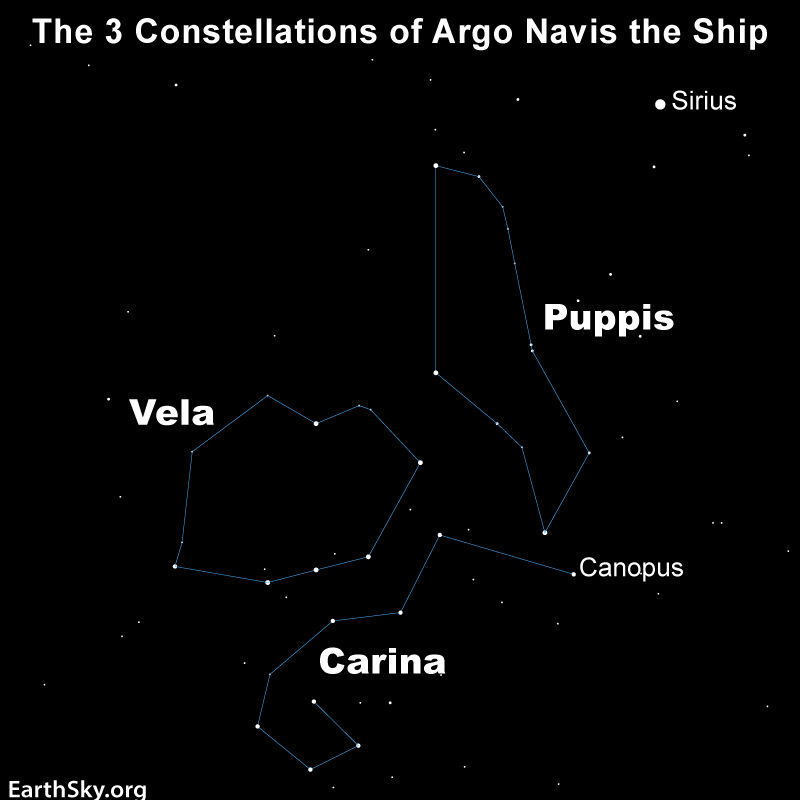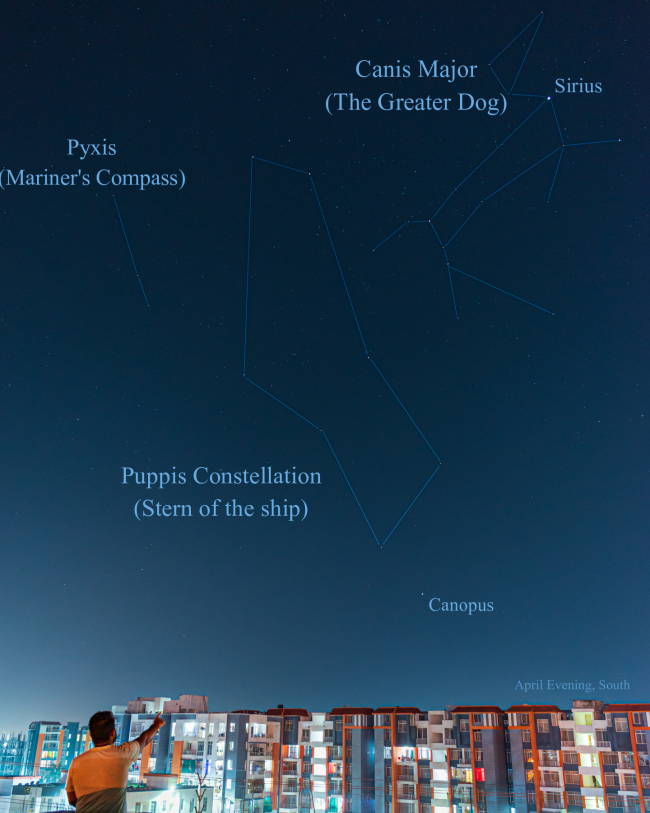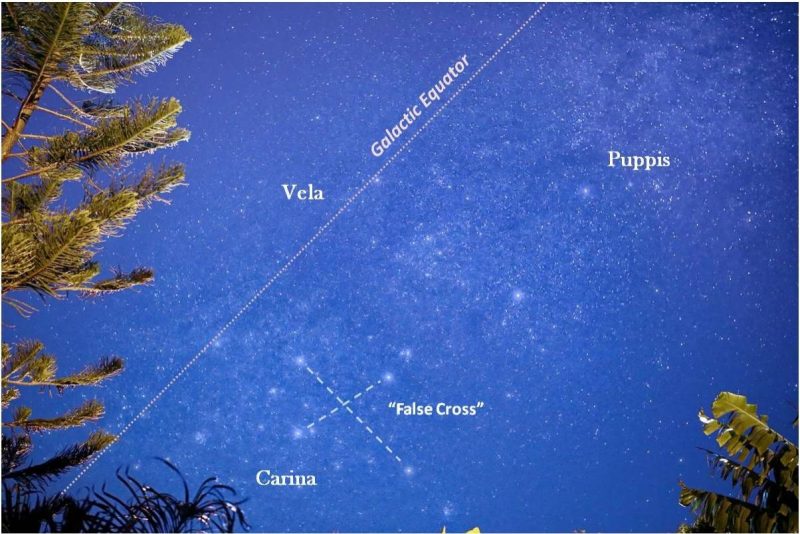
The constellation of Puppis was once part of a much larger constellation named Argo Navis. In the 1700s, Nicolas Louis de Lacaille divided this former ship into three constellations that make up the parts of the ship. They are Puppis the Stern, Carina the Keel and Vela the Sail. Sometimes Pyxis the Compass is also included as part of the former ship. Puppis is the largest of these “new” constellations and the 20th largest in the sky, so you can imagine just how much territory Argo used to inhabit. The constellation of the Stern sails atop the flowing river of the Milky Way and holds many deep-sky delights.
Locating the constellation Puppis
Puppis is far enough south that observers can only see the entire constellation if they live around the latitude of Nashville, Tenn., 36 degrees north parallel, or farther south. However, if you’re north of this line, you can still see the northern portion of the constellation, which happens to contain three Messier objects. Messier objects are the brighter deep-sky targets – either star clusters, nebulae or galaxies – that are fun to view through binoculars or a telescope.
Look for Puppis in March after the sky gets truly dark. You should spot it close to the southern horizon. If you’re in the Southern Hemisphere, it will pass overhead, near zenith. Look for the brightest star in the sky, Sirius, in its constellation of Canis Major. Puppis is immediately south-southeast of Canis Major.
The 2022 lunar calendars are still available. Order yours before they’re gone!

The stars of Puppis the Stern
Let’s find the brightest star in Puppis. Focus first on Sirius, the brightest star in the sky in the constellation Canis Major. Trace a line from here down the Dog’s back, past his hind star and tail star, and then straight out toward a star almost 15 degrees away. (Measure 15 degrees by extending your arm and sticking your pinky finger and index finger out. The distance between them is roughly 15 degrees.) This leads you to Naos, or Zeta Puppis. At magnitude 2.2, it’s the brightest star in the constellation. It lies nearly 1,400 light-years away from Earth.
Heading almost 10 degrees (a fist width at arm’s length) in the direction of Canis Major’s hind legs, you’ll run into Pi Puppis. This star (actually a binary, or two stars) goes by the name Ahadi. This is the 2nd brightest star in the constellation. Pi Puppis has a magnitude of 2.7 and lies around 800 light-years away.
If you can only see the northernmost part of Puppis, the brightest star here is Rho Puppis. Rho Puppis’ other name, Tureis, means diminutive. You can find it lying about 11 degrees away from the brighter hind stars in Canis Major. Rho Puppis shines at magnitude 2.8 from a distance of 63 light-years.
One other star of note is L2 Puppis. Scientists say this star is like the sun but in the final stages of life, and it has a planet in orbit about the same distance from it as Earth is from the sun. This system could be a glimpse of our future.

Going deeper in Puppis
If you have binoculars or a telescope, you can explore Puppis more deeply. It lies right on the Milky Way and is home to some sparking star clusters. The brightest of these lie in the northern half of the constellation, helpful for those in the Northern Hemisphere who want a peek. Here’s a brief look at some of its best targets.
M93 is magnitude 6.2 and lies 3,600 light-years away. It’s five degrees from Rho Puppis, toward Canis Major.
M46 lies almost 10 degrees north of M93 and about one degree from the next object, M47. M46 is magnitude 6.1 and includes a bonus object, a small nebula. Scientists think the nebula (NGC 2438, with a magnitude of 10.8) is a foreground object and not truly a part of the cluster. M46 is about 5,400 light-years away, and NGC 2438 is about 2,900 light-years away.
M47 lies next door to M46, closer to Canis Major. It’s a brighter star cluster at magnitude 4.4 and about 1,600 light-years away.
Puppis is a great location to simply sweep the sky slowly with binoculars or a telescope and look for additional clusters.

Bottom line: Puppis the Stern was once part of a larger constellation known as Argo Navis the Ship. Northerners can spot Puppis far to the south on March evenings.











